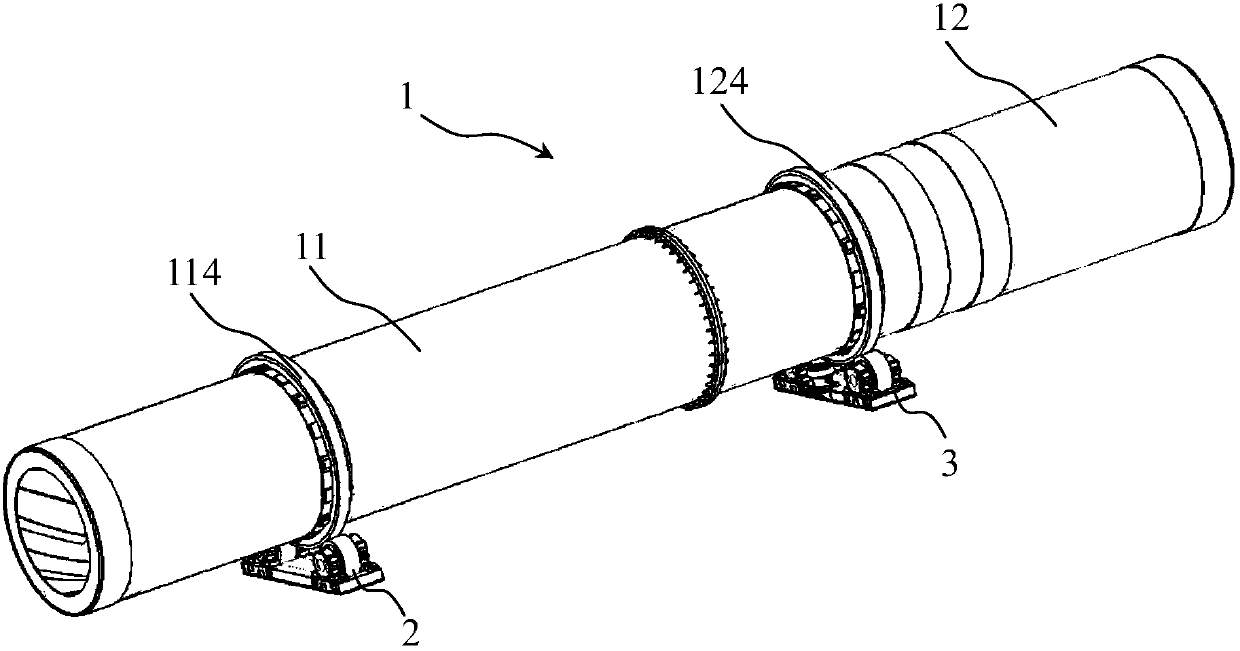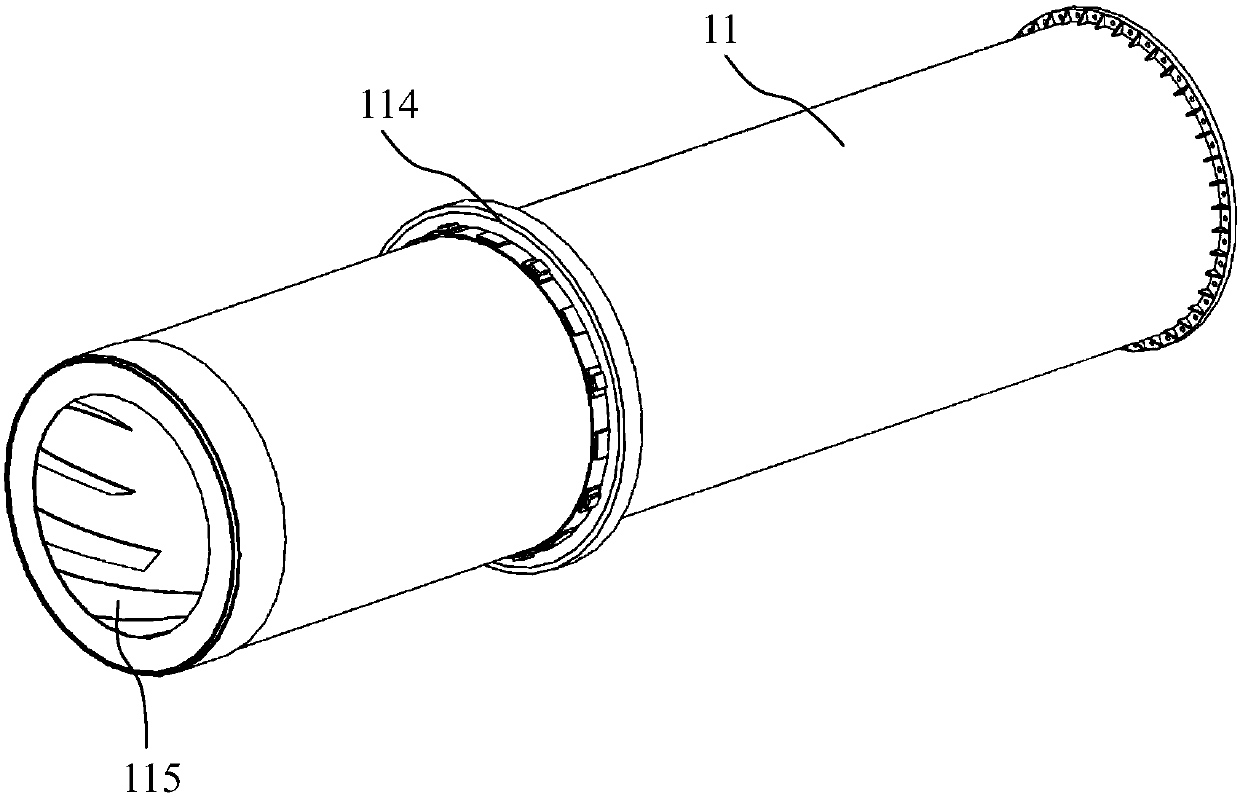Horizontal drying kiln structure
A drying kiln and horizontal technology, which is applied in the field of horizontal drying kiln structure, can solve the problems of inability to increase the amount of material input, the moisture content of the material is not up to standard, and the physical damage rate is high, so as to ensure drying efficiency and improve drying efficiency. , to ensure the effect of full contact
- Summary
- Abstract
- Description
- Claims
- Application Information
AI Technical Summary
Problems solved by technology
Method used
Image
Examples
Example Embodiment
[0029] The embodiments of the technical solution of the present invention will be described in detail below in conjunction with the accompanying drawings. The following embodiments are only used to illustrate the technical solutions of the present invention more clearly, and therefore are only used as examples, and cannot be used to limit the scope of protection of this patent.
[0030] Such as Figure 1 to Figure 9 As shown, the present invention discloses a horizontal drying kiln structure, including a rotary kiln barrel 1; the rotary kiln barrel 1 includes a feeding rotary barrel 11 and a discharge rotary barrel 12, the feed rotary barrel 11 The discharging end and the feeding end of the discharging rotary cylinder 12 are connected by bolts.
[0031] The central part of the feeding rotary cylinder 11 is provided with a feeding central cylinder 111 with the same central axis, and a plurality of feeding isolation plates 112 are uniformly ringed between the inner wall of the feedi...
PUM
 Login to view more
Login to view more Abstract
Description
Claims
Application Information
 Login to view more
Login to view more - R&D Engineer
- R&D Manager
- IP Professional
- Industry Leading Data Capabilities
- Powerful AI technology
- Patent DNA Extraction
Browse by: Latest US Patents, China's latest patents, Technical Efficacy Thesaurus, Application Domain, Technology Topic.
© 2024 PatSnap. All rights reserved.Legal|Privacy policy|Modern Slavery Act Transparency Statement|Sitemap



